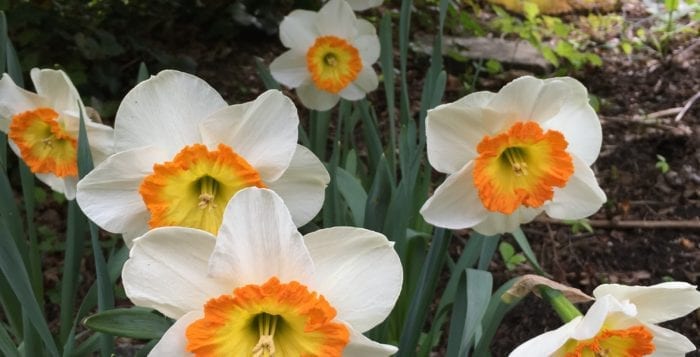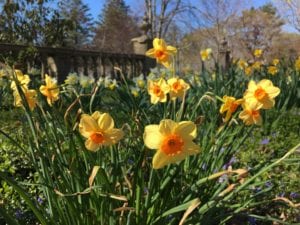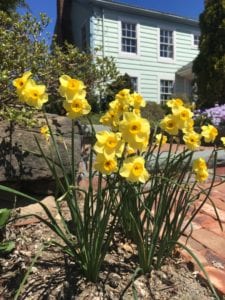The Gardener’s Delight: Planting daffodils for perennial spring beauty

By Kyrnan Harvey
No need to panic, there’s plenty of time to order bulbs. True, some varieties might be sold out, but the importers ship through December and bulbs can be planted as long as the ground isn’t frozen. I have, in the past, gotten away with planting after New Year’s.

I once had a garden with soil on the sandy side, enriched in the early years with wood-chip mulch, which eventually decomposes into humus. Here many kinds of tulips were naturalized. They need good drainage, and no excessive irrigation, in the summer months when they are dormant, or else they will rot. If I had planted five of one variety in 1998, by 2008 bulbs had increased with offsets that were flowering size. Tulips growing informally through forget-me-nots and among many other spring flowers and shrubs — as opposed to a stiffly formal throwaway mass display planting — are incomparably charming. But they are said to be caviar to deer.
Daffodils though are 100 percent deer proof. Nor do squirrels dig for them as they do for tulips. I like to plant them in a similar style: many different varieties, each segregated from other varieties. I don’t like daffodil “mixes” — five or 10 bulbs, spaced a few inches apart, randomly arranged (meaning asymmetrically, nongeometrically). In two or three years these bulbs will have a dozen or more flowers. Daffodils increase and naturalize far more reliably than tulips.
There are many more varieties of Narcissus than will be seen at Home Depot or a garden center. Thirty years ago, when I was employed as a gardener at Mrs. Whitney’s Manhasset estate, we participated in a flower show at Macy’s Herald Square. The head gardener, my boss, presented an instructional display with examples from each of the 13 divisions of daffodils, as established by the Royal Horticultural Society: trumpets, large-cupped and small-cupped N. triandrus, N. jonquilla, N. poeticus and so on.

You can find, via numerous stateside bulb importers (Brent & Becky’s, John Scheepers, White Flower Farm), splendid cultivars from any and all of these classes. Moreover, within each division, there are many variations of form and diversity of color: white perianth (the petals) with yellow or orange or pink corona (the cup, or trumpet); yellow perianth/orange cup; white perianth/white cup. The rims of the cups can have different colors too and the cups and petals can have various forms.
It is easy to fill your garden with many different long-lived daffodils, each of which has its own distinctive charm and all of which, when viewed collectively in the vernal garden, harmonize with their compadres. You can do better than merely more ‘Mount Hood’ and ‘King Alfred.’ Many are delightfully scented, which is not, by the way, the cloying odor of the florists’ tender paperwhite narcissus. If you plant a dozen varieties this year, in five years you will be able to fill vases with bountiful, perfumed bouquets.
Daffodils tolerate full sun and part shade. The pink-cupped ones prefer the latter because it preserves their color. Deep shade and water-logged soil must be avoided. Cut the spent flowers but the leaves must be left uncut, unbent, and unbraided for weeks after flowering is finished. Finding companion perennials that disguise this unsightly phase of the growth cycle — and that won’t be chowed by deer! — is a finer aspect of horticulture best left to another day.
Kyrnan Harvey is a horticulturist and garden designer residing in East Setauket. For more information, visit www.boskygarden.com.
All photos by Kyrnan Harvey






